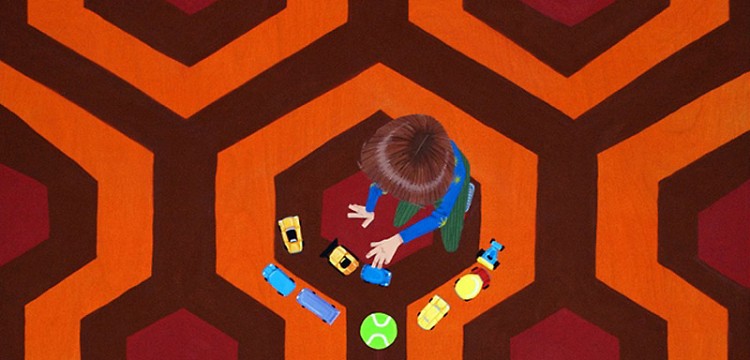Room 237 and The Shining at the UICA
Room 237:
Cost $4 for members/$8 for non-members
May 3 - May 15, 2013
The Shining:
Cost: $5
May 2 - May 5

Room 237 /Courtesy of the UICA
Room 237:
Cost $4 for members/$8 for non-members
May 3 - May 15, 2013
The Shining:
Cost: $5
May 2 - May 5
At 3:00 a.m., I bolted upright in a cold sweat. Jack Torrance’s frozen face swam before my eyes. The sight of my body pillow made me jump, and I poked at it cautiously to make sure it was more pillow than body.
Oh, the logic of dreams.
Two hours earlier, I drifted off to sleep as the credits rolled at the end of "The Shining," Stanley Kubrick’s horror masterpiece. It’s a film laced with unsettling visual and aural cues that instill a sense of dreamy unease in the viewer with every scene.
Rodney Ascher’s "Room 237" attempts to unpack some of the sources of that unease. It brings together five theorists as they explore the possible subtext of "The Shining," from Freudian imagery to moon landing conspiracy.
The structure of the film is not your conventional documentary. It’s very conversational and approaches a stream-of-consciousness aesthetic. There are no talking heads. The theories are presented in voice-over on top of a narrative montage created from almost all pre-existing footage. Not only clips from "The Shining," but from all of Kubrick’s films as well as other Hollywood films and archival footage.
It’s a peculiar style, but it works well here and holds the viewer’s attention.
The theories themselves range from allegorical theme analysis to the decoding of secret messages. On more than one occasion I found myself shouting at the film: “What?! That’s crazy!”
If you let yourself get sucked into their world, it’s a delicious game of riddles and clues and a fascinating look at the nature of filmmaking. It brings up issues of artist intent and transcendence.
Kubrick is notorious for being ultra-meticulous in his craft. What was his intention for audiences of "The Shining?" What did he want them to take away? And when does the meaning of the film transcend filmmaker intent? These questions are particularly relevant now, as modern technology enables us to view a film multiple times and to collaborate and share analysis with an entire online community.
One of the most fascinating moments in "Room 237" was when one of the theorists examined "The Shining" as it played simultaneously backwards and forwards. The juxtapositions found here were definitely not Kubrick’s intent, but were riveting nonetheless.
"Room 237" is incredibly satisfying in that way. Like when you first experience the mashup of "The Wizard of Oz" and "Dark Side of the Moon." It’s exciting. It stretches your brain. And it makes you want to watch "The Shining" again as soon as possible.
Luckily, the UICA is screening both "Room 237" and "The Shining" starting May 2. Do yourself a favor and see them in tandem.
The Rapidian, a program of the 501(c)3 nonprofit Community Media Center, relies on the community’s support to help cover the cost of training reporters and publishing content.
We need your help.
If each of our readers and content creators who values this community platform help support its creation and maintenance, The Rapidian can continue to educate and facilitate a conversation around issues for years to come.
Please support The Rapidian and make a contribution today.